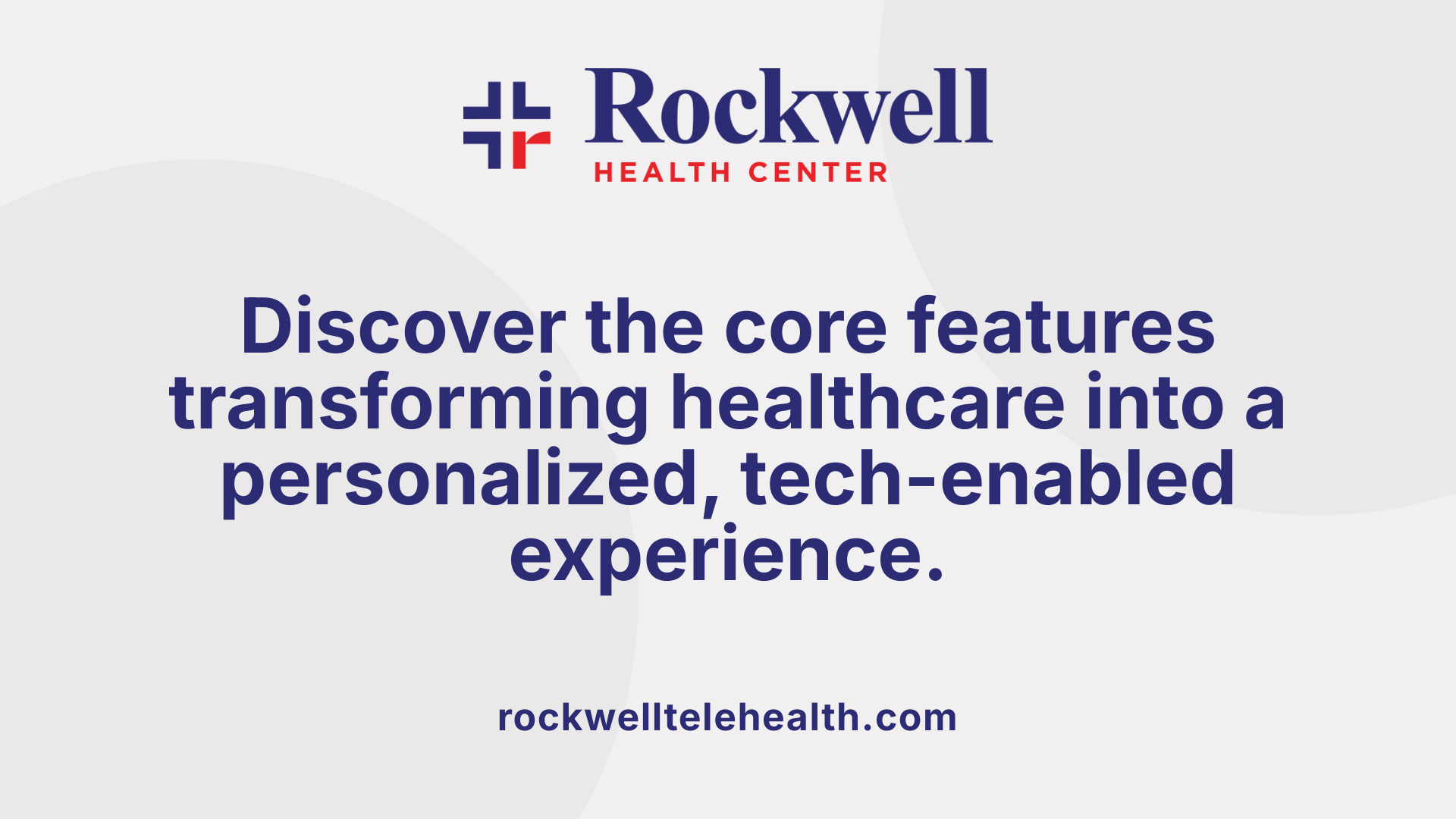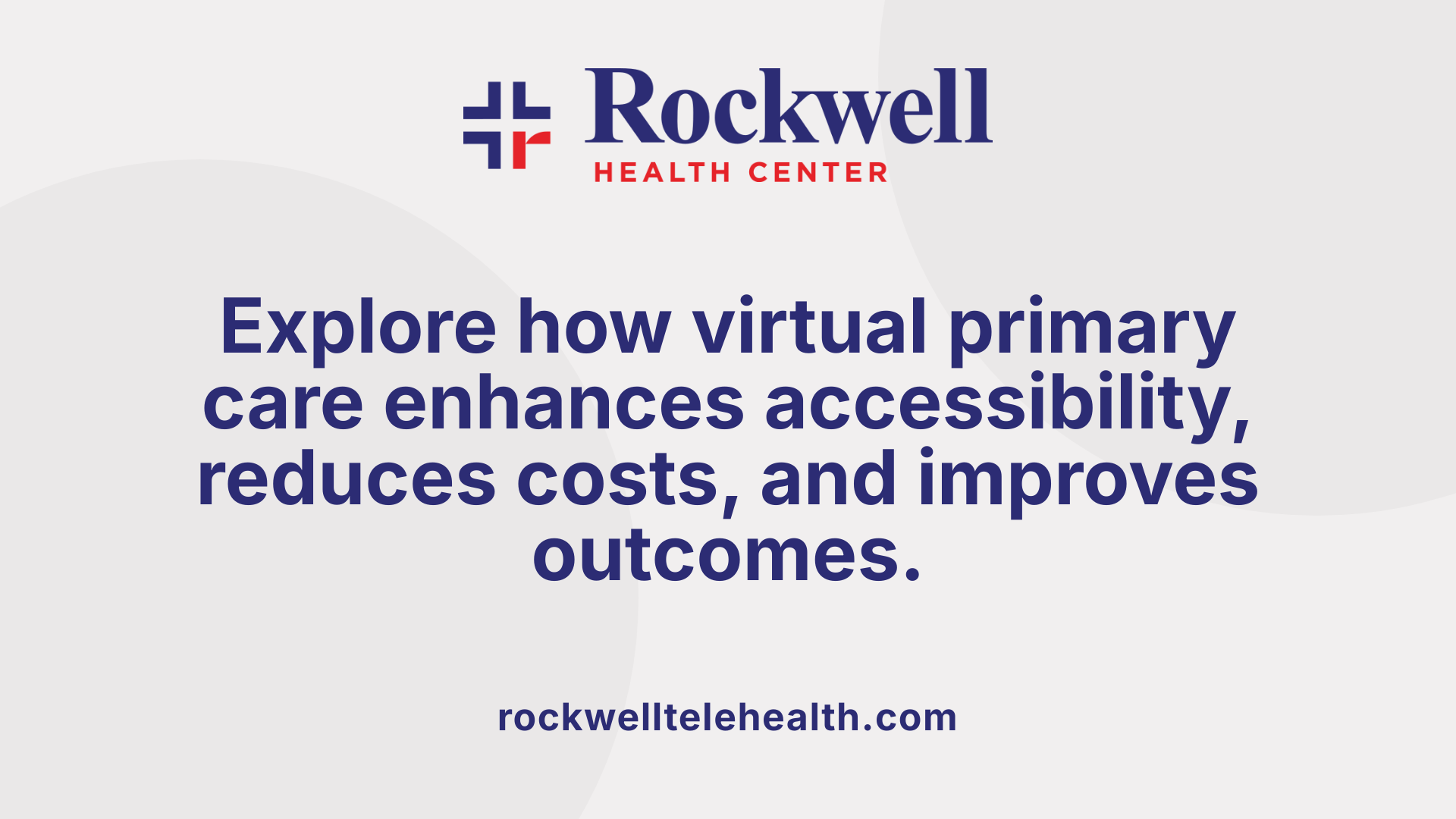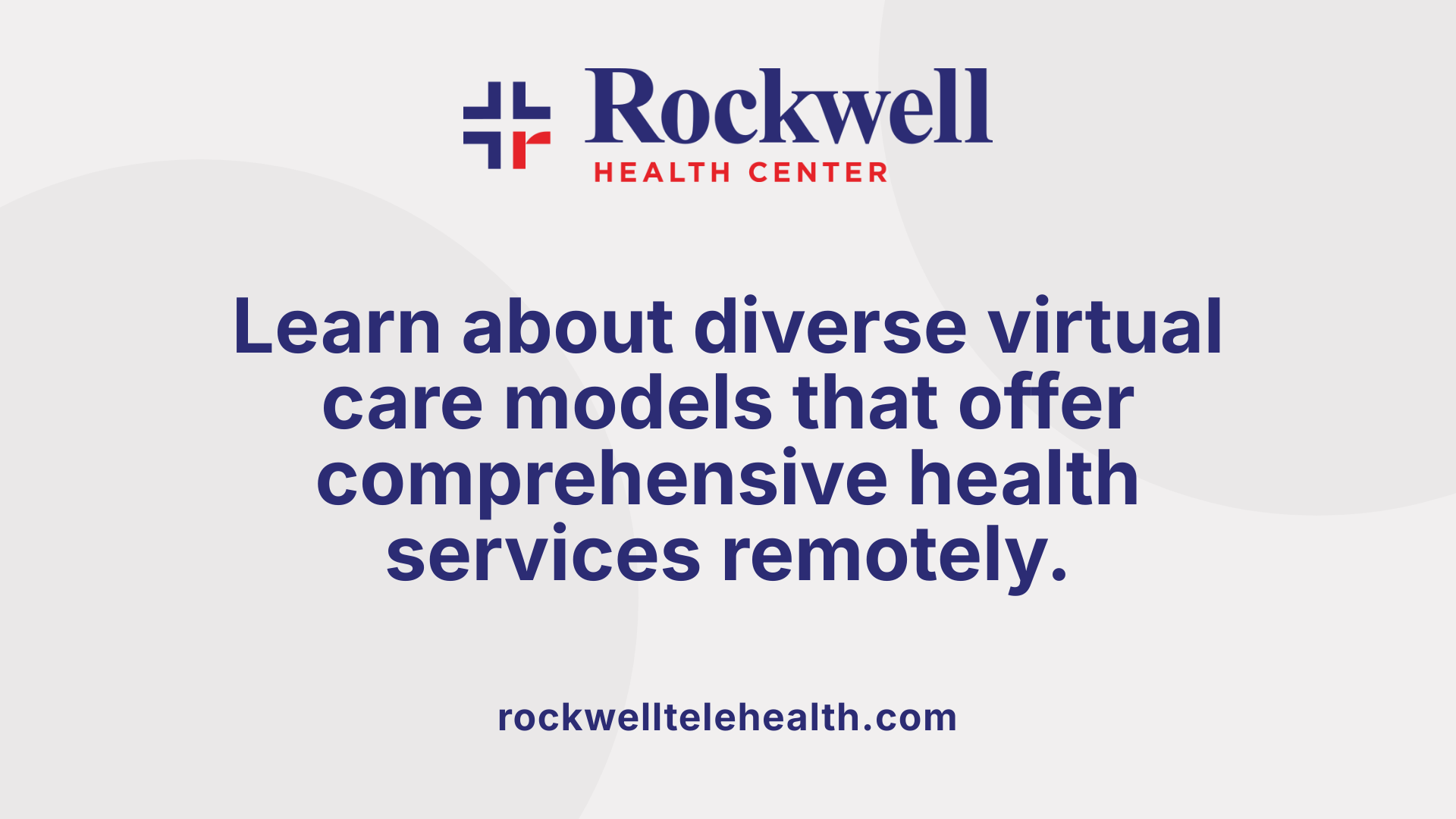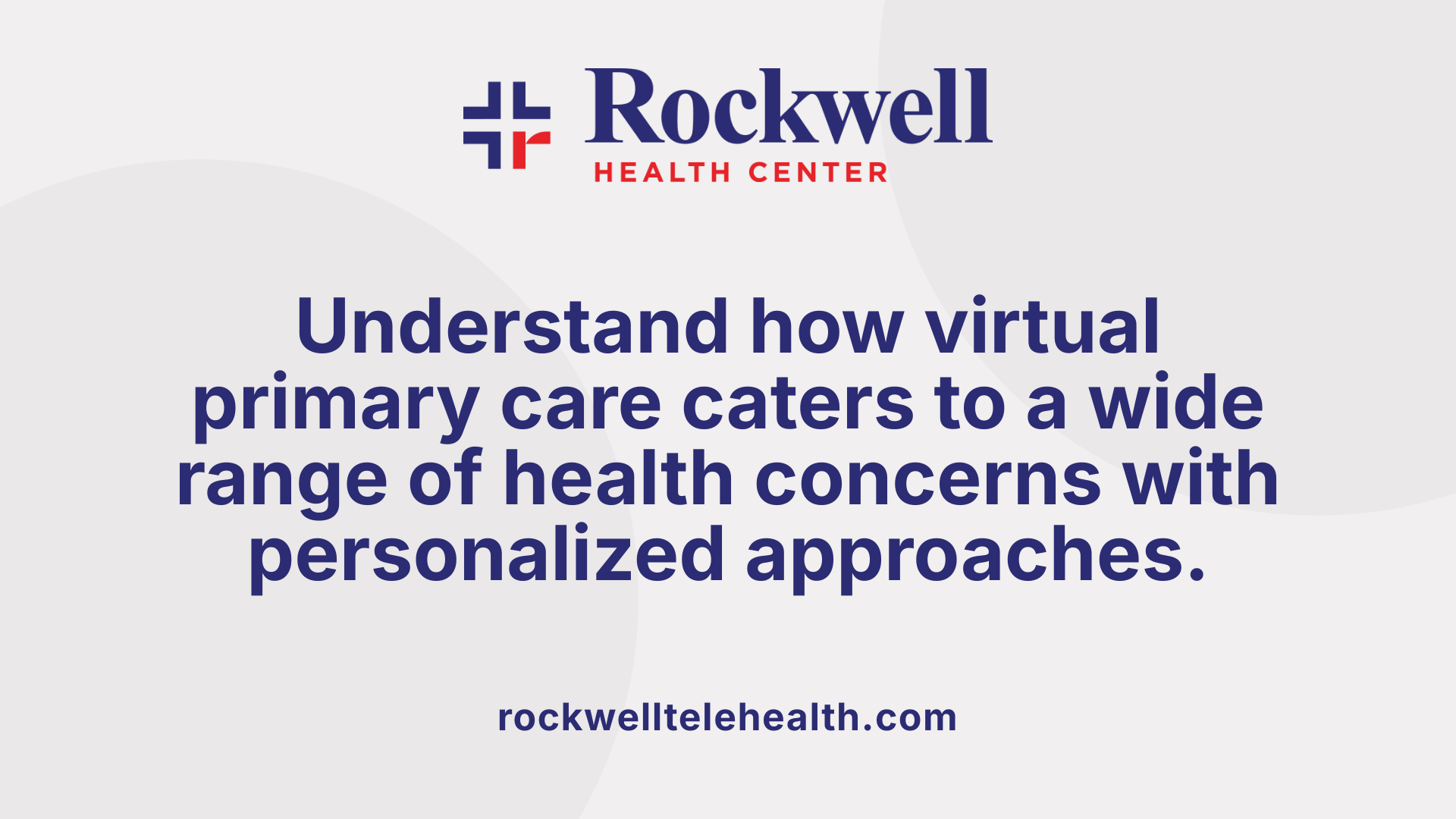Transforming Primary Care Through Digital Innovation
Virtual primary care is emerging as a pivotal solution that combines affordability and quality in healthcare delivery. With technological advancements and a focus on patient-centered services, virtual care models are redefining how individuals access primary health services. This article explores the core features, benefits, models, and strategic promotion of virtual primary care, highlighting its potential to meet diverse healthcare needs efficiently and equitably.
Understanding Virtual Primary Care and Its Core Features

What is virtual primary care and what are its core features?
Virtual primary care is a modern healthcare approach that provides essential health services through digital platforms, making healthcare more accessible and efficient. It enables patients to receive comprehensive medical care from anywhere using technology such as video calls, secure messaging, and electronic health records.
This model focuses heavily on ongoing, personalized relationships between patients and providers. Patients often have a dedicated provider who understands their health history and needs, promoting consistent and coordinated care. Virtual primary care covers a broad spectrum of services, including routine checkups, management of chronic illnesses, urgent care, preventive screenings, and behavioral health support.
Using secure video consultations and communication tools, patients can discuss health concerns, receive diagnoses, and obtain prescriptions without visiting a clinic physically. Digital health records allow providers to access and update patient information instantaneously, ensuring continuity and informed care.
A core principle of this approach is a focus on long-term health management and patient engagement. It fosters collaboration between patients and healthcare providers, encouraging shared decision-making. Additionally, virtual primary care integrates behavioral health services, offering mental health support and coaching, which are increasingly recognized as vital components of overall health.
By reducing the need for in-person visits and streamlining care delivery, virtual primary care enhances access, reduces healthcare costs, and aims to improve patient health outcomes through personalized, relationship-centered, and technology-enabled healthcare services.
Advantages Over Traditional Healthcare

What are the benefits of virtual primary care, and how do they compare to traditional healthcare services?
Virtual primary care has transformed how patients access and receive health services, offering several notable advantages over conventional methods.
One significant benefit is increased convenience and accessibility. Patients can connect with healthcare providers through secure video calls from any device—smartphones, tablets, or computers—eliminating the need for travel and reducing waiting times. This ease of access is particularly valuable for those living in rural or underserved areas, ensuring they receive timely medical attention.
Cost savings and improved efficiency are also key advantages. Virtual visits typically cost less for patients, with some services offering free consultations for members and dependents. This reduces the out-of-pocket expenses and overall healthcare spending. Providers can handle more appointments in less time, helping to alleviate doctor shortages and streamline patient management.
Research indicates that virtual primary care is as safe and effective as in-person visits for most health conditions. It fosters continuous, ongoing relationships between patients and providers, which promotes better health outcomes. For chronic disease management, mental health support, and minor illnesses, virtual care provides rapid access to necessary services, often leading to better adherence to treatment plans.
Moreover, virtual healthcare reduces the risk of infectious disease transmission by minimizing the need for physical visits. Healthcare systems can also allocate resources more effectively, with tools like electronic health records and integrated care pathways supporting seamless treatment coordination.
In summary, virtual primary care significantly enhances healthcare's reach, affordability, and efficiency, making it an appealing alternative or complement to traditional healthcare services.
Models of Virtual Primary Care and Services Included
 Virtual primary care (VPC) offers a range of delivery models designed to make healthcare more accessible and convenient for patients. Among the most common types are telehealth consultations, asynchronous eVisits, and fully integrated digital care platforms, all of which leverage technology to provide comprehensive services remotely.
Virtual primary care (VPC) offers a range of delivery models designed to make healthcare more accessible and convenient for patients. Among the most common types are telehealth consultations, asynchronous eVisits, and fully integrated digital care platforms, all of which leverage technology to provide comprehensive services remotely.
These models typically include a broad spectrum of healthcare services. Preventive care is a fundamental component, offering annual checkups, routine screenings, and wellness reminders that encourage early detection and healthy habits. For patients managing chronic conditions, virtual primary care provides ongoing support through personalized education plans, medication coordination, and regular monitoring to better control diseases such as diabetes or hypertension.
Urgent and acute care services are also prevalent, enabling patients to seek immediate assistance for illnesses or injuries without visiting a clinic physically. Behavioral health support is another crucial aspect, with virtual visits available for mental health counseling, therapy sessions, and support for emotional or social issues.
Advanced virtual care models employ cutting-edge technology, including AI-supported clinical decision tools and remote monitoring devices, to enhance diagnosis and treatment plans. Patient portals and communication platforms facilitate seamless information sharing, follow-up care, and integration with other healthcare services like laboratory tests and specialist referrals.
Many programs operate with dedicated virtual care teams led by employed healthcare providers, mirroring traditional primary care relationships. These teams ensure consistency, continuity, and personalized care tailored to each patient’s needs.
In summary, virtual primary care models are designed around increasing access, improving health outcomes, and supporting holistic patient-centered approaches. They serve diverse populations, including those facing mobility, geographical barriers, or requiring flexible healthcare options, ultimately transforming the way primary care is delivered.
Meeting Diverse Patient Needs Effectively

How can virtual primary care meet diverse healthcare needs effectively?
Virtual primary care has become a versatile solution to address a wide array of health concerns. Platforms like Doctor On Demand, First Stop Health, Amwell, ChristianaCare, and MinuteClinic Virtual Care provide services ranging from routine checkups and preventive screenings to chronic disease management and urgent care. This breadth of services ensures that patients can access comprehensive care tailored to their unique situations.
One of the strengths of virtual primary care is its ability to offer personalized treatment plans. Providers assess individual health histories, lifestyle factors, and specific needs to deliver targeted advice and interventions. For example, patients with diabetes may receive ongoing glucose management support, while those needing mental health care can access unlimited virtual therapy sessions with licensed professionals.
Strong communication is vital for successful virtual care. Building trust involves clear conversations, managing the flow of information effectively, and safety netting—guiding patients on when to seek emergency attention or follow-up care. Virtual platforms utilize secure video calls, messaging, and electronic health records to maintain continuity and clarity.
Technology plays a critical role in enhancing care quality. Easy-to-use apps, integrated scheduling, and access to personal health records facilitate seamless interactions. Providers are trained to adapt their workflows, ensuring empathy and thoroughness mimic in-person visits.
Virtual care also expands access, particularly benefiting underserved or remote populations. It lowers costs, reduces logistical barriers, and enables early diagnosis, helping patients manage conditions proactively.
By combining diverse services, effective communication strategies, technological support, and a focus on individual needs, virtual primary care platforms successfully meet the broad spectrum of healthcare demands—improving outcomes, safety, satisfaction, and overall well-being.
Promotion Strategies for Virtual Primary Care
How is virtual primary care being promoted to encourage adoption among patients and providers?
The promotion of virtual primary care involves a comprehensive approach aimed at increasing acceptance and usage among both patients and healthcare providers. One major focus is highlighting its advantages—such as cost savings, convenience, and proven patient satisfaction. These benefits help attract more users who seek accessible and efficient healthcare options.
For patients, awareness campaigns leverage messaging that emphasizes ease of access—like scheduling appointments from home, quick consultations, and reduced wait times—which resonate well in today’s busy world. Educational efforts also clarify insurance reimbursements and the quality of care achievable through virtual platforms.
Providers are encouraged through reimbursement policies that support telehealth services. For instance, completion of reimbursement has been facilitated by CMS-approved CPT codes for telehealth and remote patient monitoring (RPM), making virtual care financially sustainable. These incentives motivate providers to adopt digital care models, especially when tied to quality and value-based care programs.
Technological tools also play a role: digital triage systems, AI-driven clinical guidance, and remote monitoring devices strengthen the clinical effectiveness of virtual care. These tools enhance patient engagement and enable personalized treatment plans, making the virtual model more attractive for healthcare providers.
Efforts to embed physicians within the virtual landscape include expanding networks through partnerships with specialty groups, creating shared resource pools, and using locum tenens staff. Such strategies help manage workloads and address technological fragmentation, ensuring providers can deliver consistent, high-quality care digitally.
Overall, broad promotion of virtual primary care combines highlighting its advantages with facilitating reimbursement pathways and technological integration. This multi-layered approach fosters a more widespread adoption, benefiting patients, providers, and the healthcare system overall.
Virtual Primary Care Models for Employers and the Workforce
How does virtual primary care target employers and HR professionals to implement workplace healthcare solutions?
Virtual primary care services are increasingly becoming a strategic tool for employers and HR teams aiming to enhance workplace health benefits. These platforms, such as Doctor On Demand, Amwell, ChristianaCare, and MinuteClinic Virtual Care, offer a broad spectrum of healthcare services that can be integrated into employee benefits packages.
Employers benefit from the convenience and cost savings these services provide. Virtual clinics deliver primary care, mental health support, urgent care, and specialist referrals remotely, reducing the need for in-person visits. Employees can access care from any device—smartphones, tablets, or computers—at any time, which minimizes wait times and maximizes flexibility.
A significant advantage of virtual primary care is its potential to reduce healthcare costs. By preventing unnecessary emergency room visits—which can cost between $309 and over $1,500—virtual services help lower overall medical expenses for companies.
Furthermore, virtual health solutions support flexible work arrangements by allowing employees to seek care without disrupting their daily routines. Many programs offer free or low-cost services, making health support more accessible and encouraging regular use.
Incorporating these services into employee benefits demonstrates a company’s commitment to wellbeing, which can improve employee satisfaction, attract new talent, and boost retention. As organizations recognize the value of integrated, accessible healthcare, virtual primary care is becoming a key component of modern workplace health strategies.
| Benefit Area | Description | Additional Details |
|---|---|---|
| Cost Reduction | Less reliance on costly ER visits | Saves $309 to $1,500+ per avoided incident |
| Accessibility | 24/7 care via digital devices | Supports remote and hybrid work models |
| Employee Well-being | Comprehensive physical and mental health support | Unlimited mental health visits, personalized care |
| Recruitment & Retention | Enhances employee satisfaction and loyalty | Demonstrates employer commitment to health |
This shift toward integrating virtual primary care into workplace health programs exemplifies a proactive approach to employee wellness, aiming for healthier, more productive workforces while managing costs effectively.
Cost Effectiveness and Patient Satisfaction in Virtual Primary Care

How does virtual primary care promote cost savings and patient satisfaction?
Virtual primary care significantly reduces healthcare costs by minimizing the need for in-person visits, emergency room visits, and hospital stays. Platforms like Doctor On Demand, First Stop Health, and Amwell employ clinical pathways that have proven to generate an average of $1,100 savings per provider recommendation and lead to 26% less expensive care paths.
These cost reductions benefit both healthcare systems and patients, making virtual care a financially sustainable option. Patients also value the convenience of virtual visits, which can be scheduled quickly and accessed from any device, such as smartphones, tablets, and computers.
Patient satisfaction is notably high, with reviews and ratings reflecting strong approval of the quality, accessibility, and responsiveness of virtual care services. Up to 88% of patients recommend platforms like ChristianaCare’s Virtual Primary Care. Users highlight the ease of getting timely medical attention and continuous support for chronic disease management and preventive care.
Furthermore, ongoing virtual care helps manage health conditions effectively, preventing complications that could lead to higher costs. These combined factors—cost efficiency and positive patient experiences—demonstrate how virtual primary care offers a valuable, patient-centered approach that can improve health outcomes while controlling expenses.
| Benefit Area | Impact | Additional Details |
|---|---|---|
| Cost Savings | Reduces overall treatment costs | $1,100 average savings per recommendation, 26% less costly care paths |
| Patient Satisfaction | High approval ratings | 88% recommend ChristianaCare virtual services, positive testimonials |
| Access and Convenience | Quick scheduling and flexible access | Available 24/7 on multiple devices |
| Health Outcomes | Better management of chronic conditions | 32% decrease in HbA1c, 44% weight loss, blood pressure improvements |
These figures underscore how virtual primary care combines affordability with high-quality patient experiences, making it an attractive option for modern healthcare needs.
Conclusion: Evolving Healthcare Through Virtual Models
How does virtual primary care enhance healthcare delivery, and what is its future potential?
Virtual primary care significantly improves healthcare accessibility, allowing patients to connect with licensed providers from anywhere using their smartphones, tablets, or computers. These services cover a broad range of needs, including annual checkups, chronic disease management, urgent and mental health care, and preventive screenings.
The convenience of unlimited visits, real-time scheduling, and integrated health records foster stronger, ongoing relationships between patients and providers. Emphasizing privacy and security through HIPAA-compliant platforms ensures confidential care, while features like care coordination and specialist referrals promote comprehensive treatment.
As technology continues to advance, virtual primary care is poised for broader integration into the healthcare system. Its potential includes more personalized, data-driven health management, expanded use in employer benefits and community health programs, and seamless blending with in-person services. This evolution aims to build a more resilient and equitable healthcare landscape, where high-quality care is accessible to diverse populations.
| Aspect | Description | Benefits/Implications |
|---|---|---|
| Accessibility | Care available anytime on multiple devices | Increased reach, convenience |
| Cost-Effectiveness | Reduced costs through efficient pathways and prevention | Lower healthcare expenses, better resource use |
| Service Range | From urgent to preventive, chronic, behavioral health | Comprehensive care coverage |
| Patient-Provider Bond | Continuous relationship building with personalized support | Improved health outcomes |
| Future Outlook | Greater technology integration and data utilization | More tailored, proactive care, health system resilience |
Harnessing the Future of Healthcare Innovation
Virtual primary care stands as a transformative force in making healthcare more accessible, affordable, and patient-centric. Its core features, wide-ranging benefits, and versatile models position it as a crucial component in bridging gaps in traditional healthcare. As promotion strategies and technological integrations advance, virtual primary care is poised to reshape how individuals and organizations approach health management—delivering quality care that is both cost-effective and tailored to meet diverse needs, fostering a healthier society for the future.
References
- Virtual Primary Care | See an Online ...
- Virtual Primary Care Solutions | For Employers and ...
- Clinical solutions for payers: Virtual Primary Care
- Easy Access Primary Care
- MinuteClinic Virtual Care
- The Impact of Virtual Consultations on the Quality ...
- Benefits of Telemedicine
- Telehealth Primary Care vs. Traditional In-Person Visits
























































































.png)